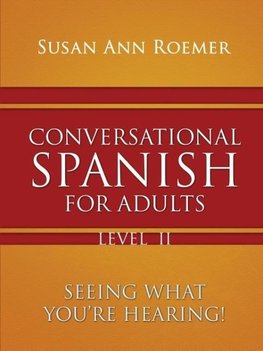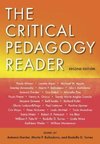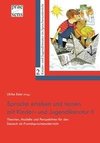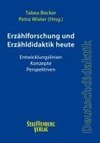
-
 Anglický jazyk
Anglický jazyk
Conversational Spanish For Adults
Autor: Susan Ann Roemer
Conversational Spanish For Adults
Español Conversacional Para Adultos
es-pa-NYOL kom-ber-sa-sio-NAL PA-ra a-DUL-tos
Seeing What You're Hearing!
¡Viendo Lo Que Está Escuchando!...
Viac o knihe
Na objednávku, dodanie 2-4 týždne
41.31 €
bežná cena: 45.90 €
O knihe
Conversational Spanish For Adults
Español Conversacional Para Adultos
es-pa-NYOL kom-ber-sa-sio-NAL PA-ra a-DUL-tos
Seeing What You're Hearing!
¡Viendo Lo Que Está Escuchando!
BIEN-do LO KE e-STA es-ku-CHAN-do
People learn their languages by hearing words and then understanding what they mean. A child learns words, strings them together in phrases, and is later corrected by his or her parents. Imagine if a 4-year-old in saying a sentence were forced to say the complete conjugation of the verb before going on to the next phrase! Yet many people think that to learn a new language they need to learn all the conjugations before they continue.
This method is in essence a "mapping of sounds". The students are taught a phrase, what it means in English, and what the sounds look like through a phonetic transcription that is unique to this method. Spanish language learners may practice the sounds without the need of an instructor being present. The advantage is clear: it is one thing to hear the sounds and repeat the words; it is quite another thing to have a visual image of what the sounds look like. Recent research confirms what many have long suspected -- most people are a combination of visual and auditory learners. It only makes sense that a teaching approach should be directed at both modalities in addition to some kinesthetic activities to reinforce the learning. The students will be able to take what was spoken in the classroom and easily reinforce it at home through additional practice.
In music some people can produce music "by ear" while others need to read the music. The printed page also describes the cadence and scales, whole or half notes, etc. In some ways this approach can be compared to sheet music rather than to music produced by ear. It is helpful to have written instructions to complement the initial practice regardless of whether one is trying to communicate the same sound in music or in language learning. This gives more detail and allows the producer to repeat the message more accurately.
The four modalities of learning any language are reading, writing, speaking, and listening. Research has shown that a person can master any concept in any language after being exposed to it a total of ten times. It can be a language concept, a scientific theory, or a mathematical theorem, but the important point is the need for repetition. The goal of this approach is to make learning the Spanish language repetitive without being boring! Simple phrases are repeated in multiple contexts. Students are able to reproduce the phrases outside the classroom setting in situations where they feel comfortable. Since it is usually impossible to transport students to a Spanish-speaking environment, the method by definition needs to be vicarious. Of course the more they use the phrases taught in class and reproduced outside the classroom, the faster they learn the language. With repetition in and out of class their speed and pronunciation will improve; their words and sounds will all flow together.
In this method the three steps of each concept are (1) the structure; (2) an example; and (3) a given practice task for the student with a partner. In the military the same steps are implemented to teach a task -- structure, example, and practice. It only stands to reason that the more opportunities the student has to practice a given task, the more efficient the learning will be in the student's memory bank. As the old adage goes, "Practice makes perfect."
- Vydavateľstvo: TotalRecall Publications, Inc.
- Rok vydania: 2016
- Formát: Paperback
- Rozmer: 280 x 210 mm
- Jazyk: Anglický jazyk
- ISBN: 9781590956397




 Nemecký jazyk
Nemecký jazyk 








 Španielsky jazyk
Španielsky jazyk